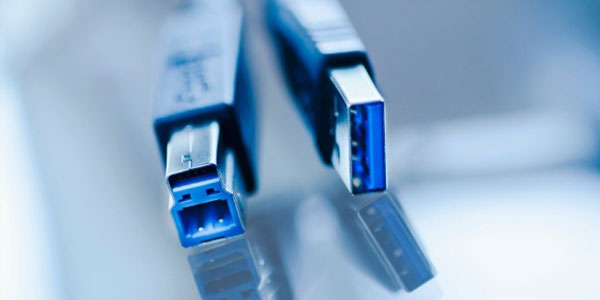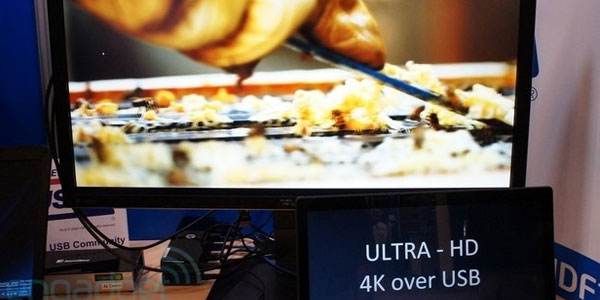Since it was launched, in the late 1990s, the Universal Serial Bus connector’s technology has been found in all computers and almost every PC connectable gadget. In 2013 alone, over 4 billion USB enabled devices were sold, but most of us take it for granted, just like we do with the paper clips and staplers. When looking to 2014, the USB connection standard will become even more a central part of our digital life, evolving in ways that will mesmerise all of us. Here are a few of them.
Universal USB Laptop Charger
The worst case of industry fragmentation is just happening with the laptops’ power port. Almost every laptop manufacturer uses their own power connector and even different models of the same brand have individual, distinctive plugs. But with the exception of large tablets, like Microsoft Surface and Galaxy Note 10.1, which have their own custom plugs, and of the iPhone, which uses the Apple’s Lightning connector, all other smartphones that we use today have the microUSB charger.
This standard connection has multiple advantages for the consumer, like choosing from third parties wires and adapters for their devices. And to make things even more competitive and standardised, in the EU, we even have laws that force smartphones manufacturers to provide USB charging. This way, a lot of eWaste is eliminated mostly because people keep their chargers after their gadgets are replaced.
But the traditional USB ports do not provide 45 to 65 Watts required by the laptops. So USB Power Delivery was developed, a standard that provides 100 Watts, together with a USB data connection on the same wire. A practical demonstration was provided at this year CES by the USB Implementers CEO, Jeff Ravencraft, using a USB PD modified Dell laptop. Also, a USB wire from the laptop’s USB PD port was connected to a modified Targus docking station linked to a HD monitor. In the end, the docking station was sending power to the laptop while receiving 1080p video stream back from it, over the same wire.
Buying a laptop charger, charging dock or an AC adapter from a third party manufacturer is a nightmare, both for the consumer and the makers. The USB PD will come as a relief and will enable a new generation of smart docks and monitors, which will work with everything. As announced, we are waiting this year, for laptops and accessories that support USB PD.

Who Need Thunderbolt? Superspeed USB 3.1
USB 2.0 was the standard for many, many years, but USB 3.0 has finally taken its place. But even thou it tops out at 5 Gbps, in theory, the USB 3.0 takes more than 20% hit because of the overhead and other inefficiencies, resulting in a 400 to 500 MBps transfer range, a bit slower than the fastest SSDs.
The USB 3.1 has solved many of these issues and raises the throughput to 10 Gbps making and external storing device just as fast as the one inside the computers. At the 2014 CES, USB-IF demoed the USB 3.1 using a RAM disk on an internal card, which achieved read and write speeds of over 1 GB / second. In a second demonstration, two desktops were connected with a USB 3.0 cable, but with the new, not final, USB 3.1 controllers. This time, the read and write speeds went over 900MBps.
The Intel’s Thunderbolt connection standard provided 10 Gbps originally, going up to 20 Gbps with the 2.0 version and it was considered a serious competitor technology for the USB. But, except for some handful of products, used by creative professionals, the USB 3.1 is bringing high speeds and high-power connections to the regular people, to the masses.

Reversible USB C Plug for Phones and Tablets
At some point we’ve all fumbled around trying to insert a USB connector in the wrong way. At the end of 2013, USB-IF announced the USB C connector, which will be able to be plugged either right side up or upside down. In addition, it will be about the size of the current microUSB and will support USB 3.1 technology. We wait for the first sample this spring, as promised by the Chairman Brad Saunders.

4k Video Over USB
This year, at CES, DisplayLink presented the new DL-5500 chipset, which can deliver video at 3840 x 2160 resolutions over a single USB 3.0 connection. This is a remarkable breakthrough, as now we can use our PCs to output video data to the best large screen TVs and monitors just by using the current USB connection standard.
DisplayLink enabled users to connect full HD monitors over the USB for a long time now and has developed docks that allow us to drive two displays in the same time. We can hardly wait to see docks and adapters using the DisplayLink DL-5500 and even more excited to see this technology on monitors and TVs. Also, last year we’ve seen the first 1080p portable monitor, the ASUS MB 168B+, and now, we hope that the future 4k screens will be able to fit in our laptop bags.

